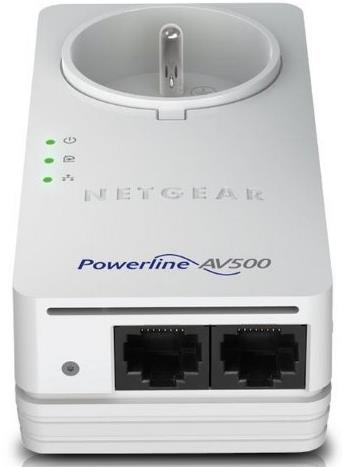

- #POWERLINE AV500 NETWORK KIT HOW TO#
- #POWERLINE AV500 NETWORK KIT FULL#
- #POWERLINE AV500 NETWORK KIT PC#
#POWERLINE AV500 NETWORK KIT PC#
A powerline adapter lets network travel through electric wiring and it’s a physical connection between your PC and your router, but it’s still not as reliable as a direct Ethernet connection from your router to your PC. Can a Powerline Adapter Beat Ethernet Cable?Įven if you have excellent electrical wiring in your home, a powerline adapter can never be as reliable as an Ethernet cable. This will allow you to connect the adapters directly to your router and directly to your PC, reducing latency and the risk of potential packet loss or connection drop outs. We’d highly recommend purchasing a powerline adapter that includes an Ethernet cable.

Some of the newer ones will auto-detect each other, making the setup process even easier.įor example, my TP-Link AV600 mbps Nano Powerline adapter has the following instructions. The overall process may differ from brand to brand, but generally all you need to do is plug in your powerline adapters into two empty wall sockets, connect them to your network, and press the Pair buttons. Fortunately, this isn’t true at all and powerline adapters are very easy to set up. The common belief is that they are hard to set up and require DIY skills.
#POWERLINE AV500 NETWORK KIT HOW TO#
How to Install a Powerline Adapter – Top Tipsīecause powerline adapters run network data through the electrical wiring in your home, many people are scared away from the technology. As a result, I’d recommend purchasing a powerline adapter first and if you get slow speeds, return it and try a WiFi extender instead.
#POWERLINE AV500 NETWORK KIT FULL#
This means that while a powerline adapter can generally be the most suitable solution to boosting your network range, it isn’t suitable for everybody.įor example, my own home’s wiring is good enough that I can get very close to my network’s full speeds, and in turn very close to the speed an Ethernet cable would give. The speeds you’ll get using a powerline adapter are dependent on the quality of your home’s electric wiring. As far as latency is concerned, powerline adapters are far superior to WiFi extenders. Powerline adapters, on the other hand, simply convert the network data from your router and carry it directly to your PC through electrical wiring. Through all of this, walls, furniture, or ceilings can still get in the way of your signal, too. This can add to the latency of your network and lower your overall speeds. This is because the signal is beamed to one location, then beamed to another. While a WiFi extender can extend the WiFi signal, there is significant degradation when you use such a product. Obviously, the goal for both products is to allow a computer to get a stronger signal, usually because the WiFi signal from the router is out of range.

Now that we’ve briefly explained the technology behind powerline adapters and WiFi extenders, let’s take a look at the performance of both. Which is Better? A Powerline Adapter or WiFi Extender?


 0 kommentar(er)
0 kommentar(er)
